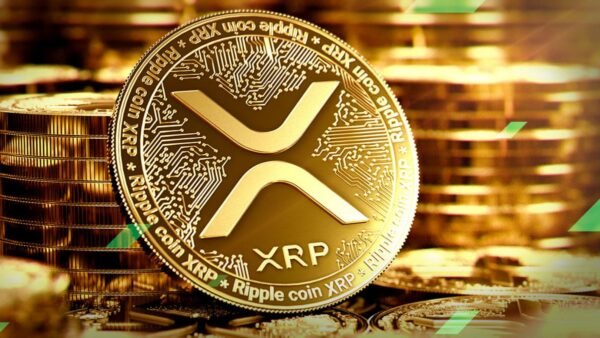XRP’s Potential Inclusion in a U.S. Crypto Reserve: Opportunities and Obstacles
The possibility of XRP becoming a part of the U.S. crypto reserve has spurred considerable discussion within the cryptocurrency market.
This consideration arises from positive trends in the crypto market and Ripple CEO’s involvement in Trump’s advisory board. While Bitcoin is currently favored for such reserves, there’s a growing belief that XRP could also meet the criteria with certain price increases.
Background
The concept of the U.S. holding cryptocurrency in its reserves has evolved, initially focusing on Bitcoin as a hedge against inflation due to its limited supply. However, the conversation has expanded to include other digital assets like XRP, leading to debates about diversifying the crypto reserve.
A diversified reserve mirrors the U.S.’s approach to traditional assets like gold, foreign currencies, and government debt. The inclusion of XRP could provide a more balanced and functional financial tool.
Potential Benefits of XRP
Arguments in favor of adding XRP to the U.S. crypto reserve include:
- Transaction Efficiency: XRP’s transaction speeds are notably faster than Bitcoin’s, settling in seconds, which makes it highly efficient for cross-border payments.
- Relevance to Government Crypto Reserve: If the U.S. government aims to use a crypto reserve for liquidity and transactions, XRP would be a logical choice.
- Integration into Banking Infrastructure: Ripple’s technology is being tested and adopted by banks and payment providers, setting it apart from other cryptocurrencies that operate independently of traditional financial systems.
- Bridging Traditional and Digital Finance: XRP’s alignment with existing institutions would be a significant advantage if a national crypto reserve is intended to bridge the gap between traditional finance and digital assets.
- Diversification: XRP could act as a hedge against economic volatility, complementing assets like gold, fiat reserves, and Bitcoin. Its utility in payments and liquidity solutions could make it a strategic tool for global finance.
Challenges to XRP Inclusion
Despite the potential benefits, XRP’s inclusion faces significant hurdles:
- Decentralization Debate: Critics argue that Ripple’s substantial token holdings give it excessive control over the network. This contrasts with Bitcoin, which operates independently of any central entity.
- Regulatory Uncertainty: Despite a partial legal victory for Ripple in 2023, the SEC still considers XRP a security in some contexts. This lack of complete regulatory clarity poses challenges for official U.S. government adoption.
- Market Capitalization and Liquidity: Compared to Bitcoin’s larger market cap, XRP’s market cap raises concerns about liquidity and scalability. Bitcoin’s widespread adoption and deeper liquidity pool make it a more practical option for quick asset liquidation.
- Price Levels: There are expectations that XRP prices need to increase to a certain level to be considered valid for inclusion in U.S. strategic reserves.
Expert Opinions and Market Analysis
Experts are closely monitoring critical technical levels for XRP’s upward trend. Overcoming certain price levels is seen as crucial for the continuation of the rise. There are suggestions that XRP reaching a specific price could meet the criteria for inclusion.
Ripple CEO and Political Factors
Ripple CEO Brad Garlinghouse has discussed including XRP in a diversified U.S. strategic reserve asset with President Donald Trump.
Garlinghouse views Trump’s potential re-election as beneficial for the cryptocurrency sector, signaling a more favorable regulatory environment.
Trump’s executive order to create a Presidential Working Group on Digital Asset Markets has further fueled speculation about XRP’s potential inclusion. The order directs the group to consider a “strategic national digital assets stockpile”.
XRP presents itself as a potential candidate for a U.S. crypto reserve, with its transaction efficiency and integration into banking infrastructure being key strengths.
However, challenges related to decentralization, regulatory clarity, and market capitalization need to be addressed.
The ultimate decision will likely depend on regulatory developments, market dynamics, and the U.S. government’s strategic objectives in the digital asset space.
Also Read




Post Comment